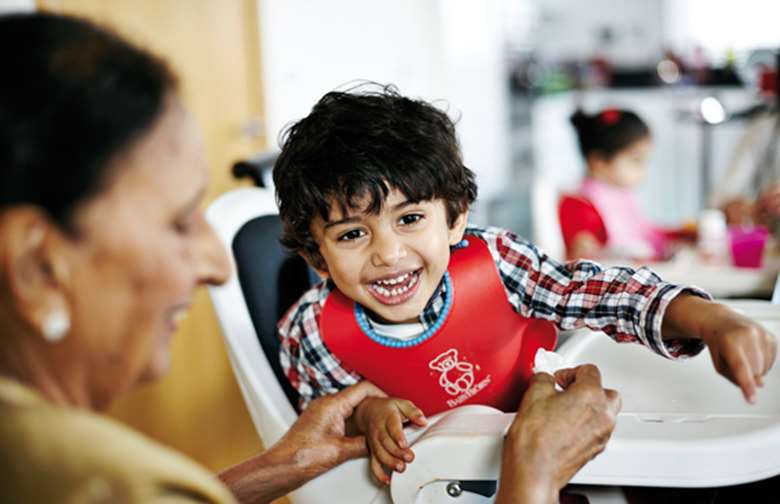New Orleans Intervention Model
Emily Rogers
Tuesday, April 12, 2016
Programme that emphasises young children's secure attachment with primary carers, which was developed in the US, and implemented by NSPCC in the UK.

- NSPCC programme aims to help newly fostered under-fives recover from trauma of neglect and abuse by developing secure attachment to primary carer
- Its assessment and early intensive treatment for children, birth parents and foster carers aims to get permanency decisions right first time
- Courts decide to return child home if programme's treatment is shown to result in safe environment where secure attachments can grow, or place them permanently into care and adoption if not
ACTION
The NSPCC's decision to replicate the US-developed New Orleans Intervention Model was driven by its belief that secure attachments with primary carers are the most important factor in enabling children to thrive.
Neglected and abused children's potential recovery through swift placements in homes where they can build these attachments is often hampered by instability: the charity's research suggests around half of children returned to birth families end up back in care. "When we look at decision making in the UK care system about whether a child should return home, the quality of attachment to their caregiver is not generally taken into account," explains the programme's development and impact manager, Jessica Cundy. "We thought this model was the most comprehensive way of addressing that."
The programme started in Glasgow in early 2012, in partnership with Glasgow Council and NHS Greater Glasgow and Clyde, funded from 2013 to 2015 with just over £1m from the Big Lottery Fund Scotland. England's version got under way in Croydon last October, in partnership with Croydon Council and South London and Maudsley NHS Foundation Trust, aided by £1.5m over two years from the Department for Education's Children's Social Care Innovation Programme.
Under-fives are referred when first entering foster care, if at least one birth parent has agreed to be worked with. A multi-disciplinary infant and family team, including social workers and NHS-seconded psychologists and psychiatrists, starts a 10- to 12-week assessment of the child, birth parents and foster carers, usually starting with home visits, then weekly meetings at the charity's service centres.
The team uses structured interviews and questionnaires to assess birth parents' mental health, parental relationship and the issues and trauma they have faced. Key to their assessment is whether the parent can recognise the neglect or abuse, and is capable of reflecting on its causes.
The team assesses the child's development and attachment with each foster and birth parent.
Assessment results are presented at a case conference attended by the foster carers, professionals connected to the birth parents and the child's social worker, who retains responsibility for the case. Their discussions usually result in an individually-tailored treatment plan for the child and birth parents.
Treatment sessions take place around twice weekly, helping parents understand the impact of their early experiences, the importance of their parenting role and how they can ensure their child's safety. The team ensures they are receiving specialist help for issues such as addiction and domestic violence. "We recognise that if the mother is suffering from domestic abuse, she might find it hard to respond to her child's needs," Cundy explains. "So the foundation of this work has to be dealing with the parent's own issues and past trauma, while ensuring the child is safe and in a secure relationship with their foster carer."
Treatment usually includes parent-infant interventions such as Attachment and Biobehavioural Catch Up, which coaches carers in nurturing and responding appropriately to maltreated children by interpreting behaviour signals; or Circle of Security, which helps parents improve attachment to their children.
The England team generally works with the family for around six months, to comply with the requirement to complete care proceedings within 26 weeks. In Scotland, the team can work with the family for up to 12 months. Treatment ends with a case conference and recommendation from the team on whether returning home or permanent alternative care is best for the child. The child's social worker decides whether to recommend this to the judge and team members explain their evidence at the final hearing.
IMPACT
A 2001 evaluation of the US programme, based on 95 child participants and a pre-programme control group of 145, showed a reduction in the proportion of children who were maltreated on returning home from care, from 13.1 per cent among the control group to 4.2 per cent among participants. The proportion of parents maltreating a subsequent child dropped from 14.1 per cent in the pre-intervention period to 5.2 per cent after the programme started.
In Glasgow, 200 families have been recruited over the last four years for a £3.4m randomised controlled trial of the programme by Glasgow University. Kings College London is conducting a £100,000 DfE-funded evaluation of the Croydon programme.




